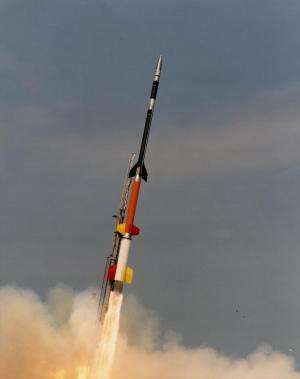NASA sounding rocket to study interplanetary medium

NASA will conduct a sounding rocket mission in May 2014, carrying a payload designed to measure the nature of the interplanetary medium, characterizing the particles that fill our solar system.
The Hydrogen Polarimetric Explorer, or HYPE, measures light reflected by interplanetary hydrogen that originally flows in from outside the galaxy. Along its travels, the hydrogen crosses the boundaries of our heliosphere, the local bubble surrounding the sun and planets that is inflated by the solar wind. Thus it can provide not only information about the nature of near space, but also of the galactic environment and how it interacts with the sun and heliosphere.
The sounding rocket measurements will provide important information on the size and shape of the heliosphere as well as information on the interstellar magnetic field at the boundary. These results will be combined with NASA's Interstellar Boundary Explorer, Voyager, and Hubble Space Telescope interplanetary hydrogen measurements to improve models of the heliospheric boundary and its interactions with the local interstellar medium.
The window for the HYPE launch opens on May 2, 2014. HYPE will fly on a Terrier-Black Brant sounding rocket, launched from the White Sands Missile Range in New Mexico. It is projected to fly to an altitude of about 185 miles during a nine-minute flight.
Walt Harris with the University of Arizona in Tucson is the mission principal investigator.
More information: www.nasa.gov/soundingrockets
Provided by NASA's Goddard Space Flight Center





















